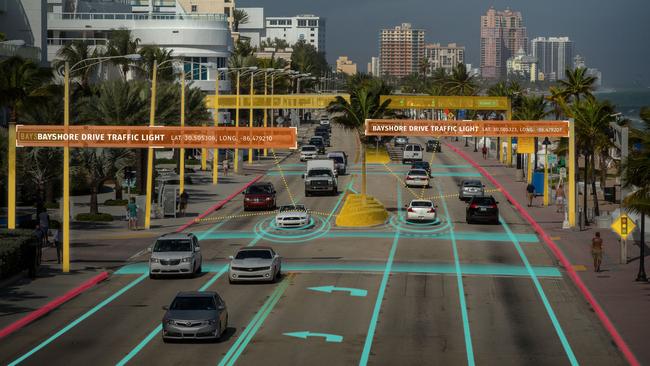Data collection fuelling advance of self-driving cars
Data, including navigation data, is the oil moving the future of self-driving vehicles.

While the Consumer Electronics Show is an amazing time to hear about the latest appliances and home entertainment products, it has also become a car expo. The focus is the future of motoring and the progress made by manufacturers to become fully autonomous. What many attendees miss is how little the car itself matters when preparing the world for autonomy in motoring. Data, including navigation data, is the oil moving the future of self-driving vehicles.
Self-driving cars can’t simply use a map like you see in a street directory. The birds-eye-view mapping does not provide a realistic representation of the road ahead. As a result, navigation companies are reworking their products for the autonomous age.
One of these, Here Technologies, is playing a business-to-business (B2B) role.
Head of highly automated driving, Sheila Nedelcu, said a vehicle didn’t just need to know to turn left in 300m. It also needs to know that the road declines 20 degrees and the brakes will need to be applied differently to a flat road. Further, the bend ahead may have a curve or a banking that the car should be prepared for.
The vehicle should also know about recent weather history. Is the road wet and would the speed limit still be appropriate on that bend of the road? According to Ms Nedelcu, Here is working to collect and provide this to vehicles. Dynamic data such as the weather or information about a newly formed pothole needs to be collected and shared in real time.
It can be partially gathered by the vehicles on the road. Only one autonomous vehicle needs to be potentially affected by that pothole before all cars are made aware of it and can avoid an impact. Councils could use the data to schedule hasty repair works.
When councils are able to share data around planned roadworks, vehicles can plan alternative routes. All of this can be achieved with the instantaneous sharing of mapping data to your vehicle before you leave home.
Here Technologies is working with Amazon, DHL and Singapore-based ride sharing firm Grab to gather the data that also can be used to understand real-time congestion, improve routing and make travel more efficient
Data collection doesn’t need to only come from vehicles. Anyone with a smartphone can become a point of reference to understand where large gatherings of people are, how fast they are moving and which paths they take.
Here is also scraping live social media data, weather websites and even the live news across various mediums to gain more insights into the movement of people.
Ms Nedelcu said individuals would be frontline reporters, offering data on social media before any large news outlet could report it.
The transmission of data in real time is currently a big hurdle. However, 5G should address that. Using 5G networks, those analysing traffic data will be able to take the data from a vehicle and share it to all vehicles in the area, and transmit it back to a mapping service. This will be the foundation of an automated world.
However, it could be decades before our cars become a loungeroom on wheels. Our current infrastructure in Australia is not ready for autonomous transport.
Geoff Quattromani travelled to CES in Las Vegas courtesy of Jabra, LG, Here and Uber. Twitter: @GQuattromani



To join the conversation, please log in. Don't have an account? Register
Join the conversation, you are commenting as Logout